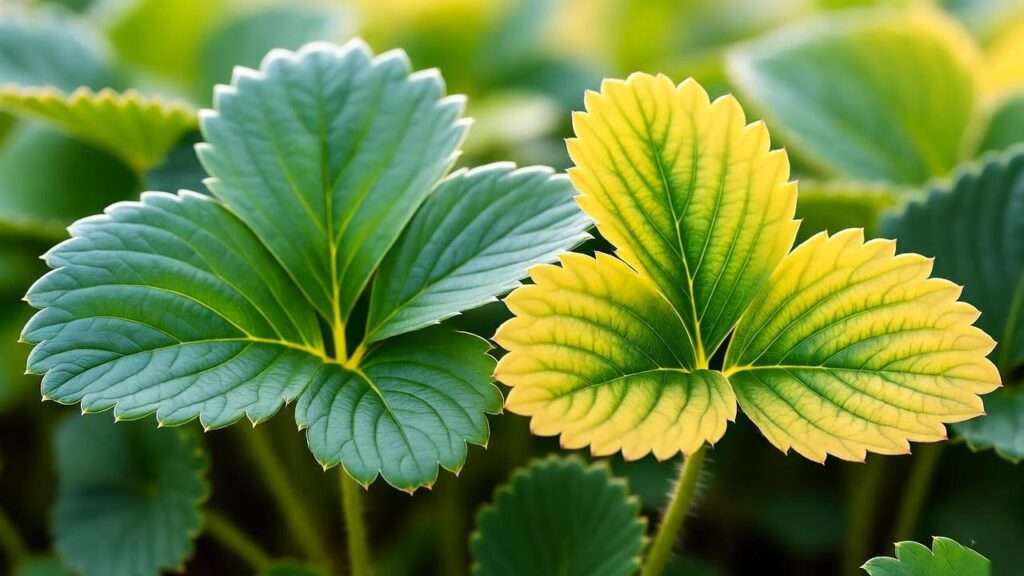Imagine stepping into your garden, eager to harvest juicy, red strawberries, only to find your strawberry plant leaves turning a troubling shade of yellow. It’s a disheartening sight for any gardener, whether you’re a seasoned grower or nurturing your first patch. Yellowing strawberry plant leaves signal that your plants are stressed, and addressing the issue promptly is crucial for restoring their health and ensuring a bountiful harvest. As a horticulturist with over a decade of experience in berry cultivation, I’ve seen this issue countless times and helped gardeners revive their plants. In this comprehensive guide, we’ll explore why your strawberry plant leaves are turning yellow, how to diagnose the problem, and actionable solutions to restore vibrant growth. Expect expert insights, practical tips, and preventative strategies to keep your strawberry plants thriving year-round.
Understanding Strawberry Plant Leaves: The Basics 🌿
The Role of Leaves in Strawberry Plant Health
Strawberry leaves are the powerhouse of the plant, driving photosynthesis to produce energy for growth and fruit development. Healthy leaves are typically dark green, glossy, and free of spots or discoloration. They absorb sunlight, convert it into energy, and transport nutrients to the roots, stems, and developing berries. When leaves turn yellow, it disrupts this process, weakening the plant and reducing fruit yield. Understanding their role helps you appreciate why addressing yellowing leaves is a top priority for any strawberry grower.
Why Yellowing Leaves Are a Red Flag 🚩
Yellowing leaves, also known as chlorosis, are a symptom of underlying issues such as nutrient deficiencies, improper care, or pest damage. While occasional yellowing of older leaves is normal, widespread or sudden discoloration indicates a problem that needs immediate attention. By identifying the cause early, you can prevent further damage and ensure your plants remain productive. Let’s dive into the common culprits behind yellowing strawberry plant leaves.
Common Causes of Yellowing Strawberry Plant Leaves 🔍
Nutrient Deficiencies
Nutrient imbalances are a leading cause of yellowing leaves. Here’s a breakdown of the most common deficiencies affecting strawberries:
- Nitrogen Deficiency: Nitrogen is essential for leafy growth. When deficient, older leaves turn yellow first, starting at the tips, while new growth appears pale. Soil testing is key to confirming this issue.
- Iron Deficiency (Chlorosis): Iron deficiency causes young leaves to yellow while veins remain green, a condition called interveinal chlorosis. It’s common in alkaline soils, which strawberries struggle with.
- Other Deficiencies: Potassium deficiency may cause leaf edges to yellow or brown, while magnesium deficiency leads to yellowing between veins on older leaves. These are less common but still significant.
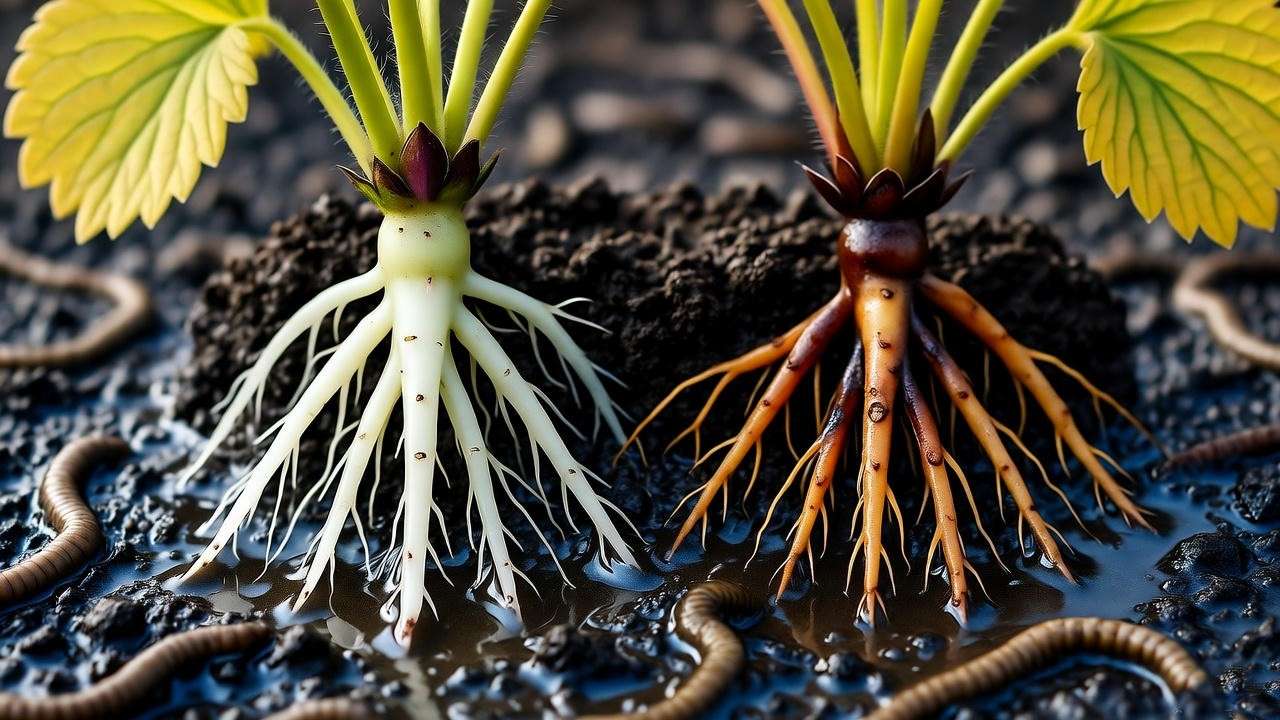
Watering Issues
Improper watering can stress strawberry plants, leading to yellow leaves:
- Overwatering: Excess water causes soggy soil, reducing oxygen to roots and promoting root rot. Yellow, drooping leaves are a telltale sign.
- Underwatering: Too little water results in dry, wilting leaves that turn yellow or brown. Strawberries need consistent moisture, especially during fruiting.
Pests and Diseases
Pests and diseases can wreak havoc on strawberry leaves:
- Pests: Spider mites suck sap from leaves, causing yellow stippling. Aphids transmit viruses and leave yellow, curled leaves. Both can be spotted with close inspection.
- Fungal Diseases: Leaf spot (caused by Mycosphaerella fragariae) creates gray-white centers with yellow halos, while powdery mildew coats leaves in white, leading to yellowing.
- Viral Infections: Viruses like strawberry mild yellow edge cause widespread yellowing and stunted growth. These are harder to manage and often require plant removal.
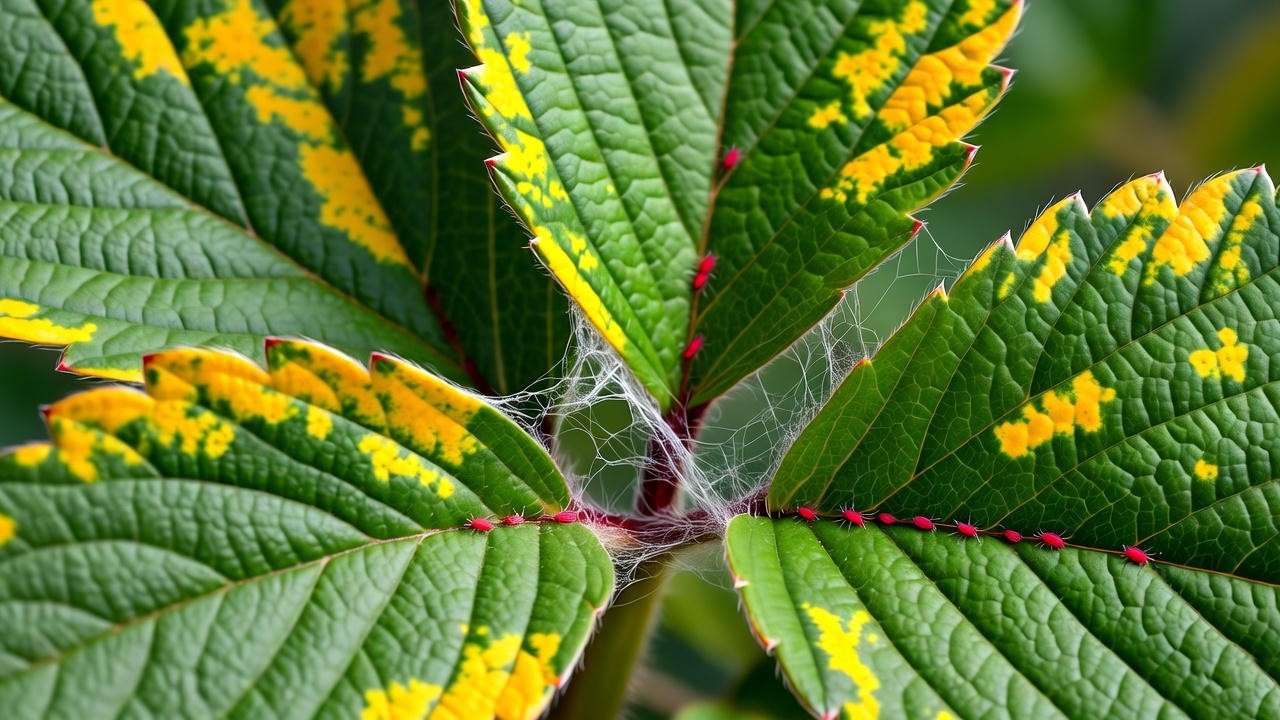
Environmental Stressors
External factors can also trigger yellowing:
- Sunlight Issues: Too much direct sun can scorch leaves, causing yellow or brown patches. Too little light leads to pale, yellow leaves and weak growth.
- Temperature Extremes: Heat stress above 85°F (29°C) or cold snaps below 30°F (-1°C) can cause yellowing or browning.
- Soil pH Imbalances: Strawberries thrive in slightly acidic soil (pH 5.5–6.5). Alkaline or overly acidic soil locks up nutrients, leading to yellow leaves.
Natural Aging or Seasonal Changes
Older strawberry leaves naturally yellow and die as part of the plant’s life cycle, especially in fall or after fruiting. However, if yellowing occurs on new growth or across the plant, it’s not just aging. Seasonal transitions may also cause temporary yellowing, but healthy plants rebound quickly.
Diagnosing the Problem: A Step-by-Step Guide 🛠️
Visual Inspection Techniques
Start by examining your plants closely:
- Leaves: Check for patterns (e.g., yellowing at edges, between veins, or on new vs. old leaves).
- Stems and Roots: Look for soft, brown roots (root rot) or weak, discolored stems.
- Overall Plant: Note stunted growth, wilting, or reduced fruiting as additional clues.
Soil and Water Testing
Testing is critical for accurate diagnosis:
- Soil pH and Nutrients: Use a home soil test kit to check pH and nutrient levels. Aim for pH 5.5–6.5 and balanced nutrients.
- Moisture Levels: Dig 2–3 inches into the soil to assess moisture. It should feel like a wrung-out sponge—moist but not waterlogged.
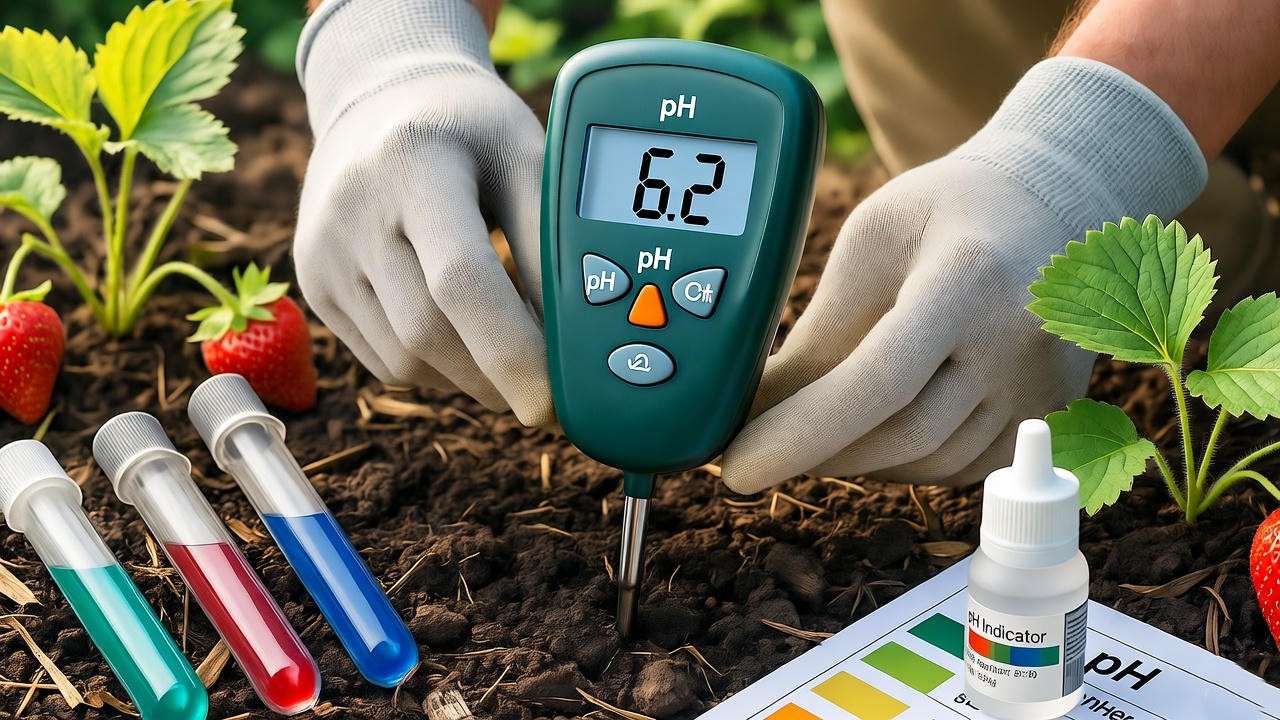
When to Consult a Professional
If symptoms persist despite your efforts, contact a local agricultural extension service. They can perform advanced tests (e.g., tissue analysis) or identify rare pathogens. Persistent yellowing across multiple plants may indicate a serious issue like a virus.
Solutions for Yellowing Strawberry Plant Leaves 🌟
Correcting Nutrient Deficiencies
- Nitrogen: Apply a balanced fertilizer (e.g., 10-10-10) or organic options like composted manure. Use 1–2 pounds per 100 square feet, applied evenly.
- Iron: Use chelated iron supplements or foliar sprays for quick results. Adjust soil pH if it’s too alkaline.
- Potassium/Magnesium: Apply potassium sulfate or Epsom salts (magnesium sulfate) based on soil test results. Follow package instructions to avoid over-fertilization.
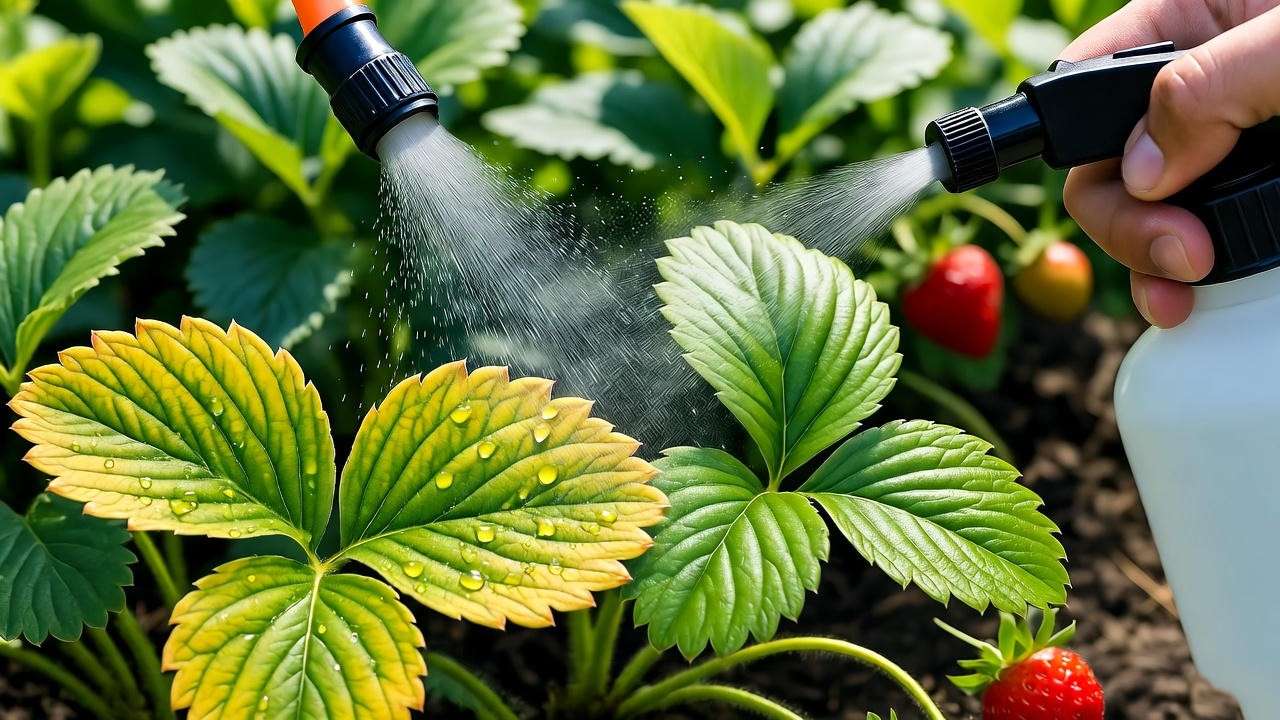
Optimizing Watering Practices
- Water deeply but infrequently, aiming for 1–2 inches per week during dry periods.
- Use mulch (straw or pine needles) to retain moisture and prevent root stress.
- Consider drip irrigation for consistent moisture without overwatering.
Managing Pests and Diseases
- Pests: Spray neem oil or insecticidal soap for spider mites and aphids. Introduce beneficial insects like ladybugs for natural control.
- Fungal Diseases: Apply fungicides labeled for strawberries (e.g., captan) and improve air circulation by spacing plants 12–18 inches apart.
- Viruses: Remove and destroy affected plants to prevent spread. Source virus-free plants from reputable nurseries.
Adjusting Environmental Conditions
- Sunlight: Ensure 6–8 hours of sunlight daily. Use shade cloth during heatwaves or grow lights in low-light conditions.
- Temperature: Protect plants with row covers during cold snaps or mulch to insulate roots.
- Soil pH: Amend with sulfur to lower pH or lime to raise it, based on soil test results. Apply gradually and retest after 6–8 weeks.
Pruning and Maintenance
- Remove yellowed or diseased leaves with clean shears to encourage new growth.
- Thin crowded plants to improve airflow and reduce disease risk.
- Clean up debris to prevent pest and fungal issues.
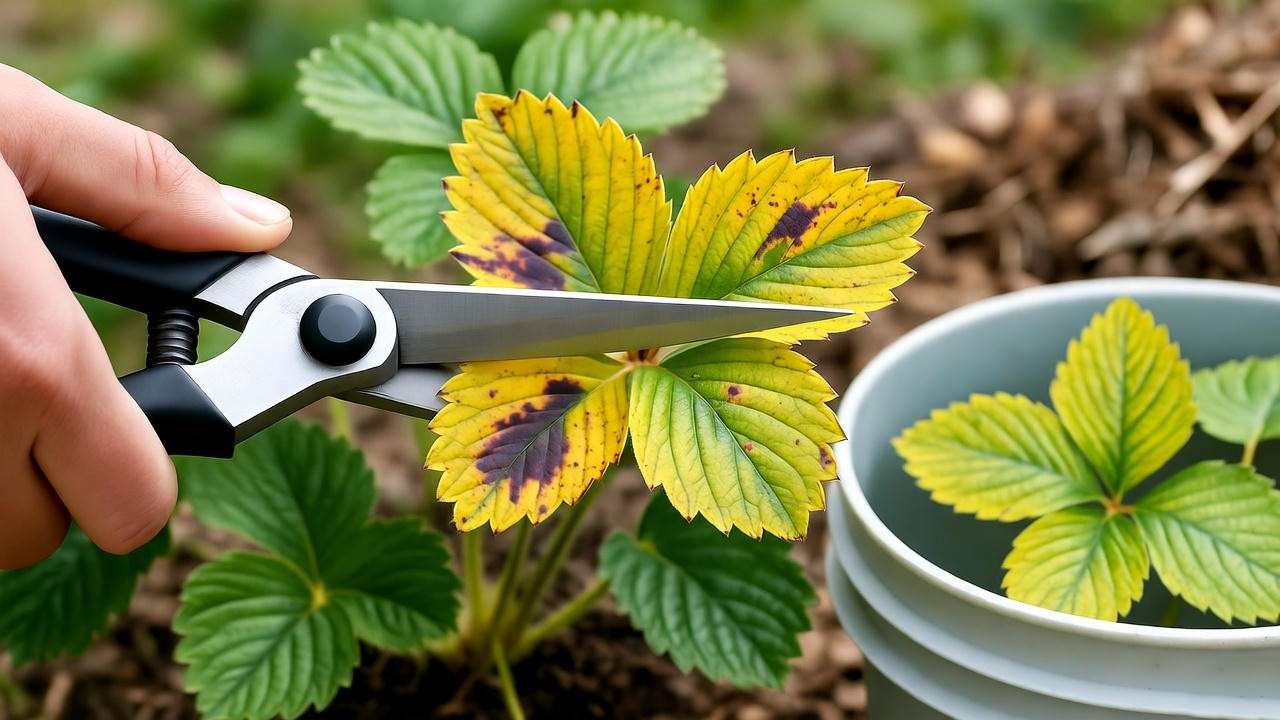
Preventative Tips for Healthy Strawberry Plants 🛡️
Choosing the Right Strawberry Varieties
Selecting the right strawberry variety can prevent many leaf-related issues. Consider these factors:
- Climate Suitability: Choose varieties suited to your region. For example, June-bearing varieties like ‘Chandler’ thrive in cooler climates, while everbearing types like ‘Seascape’ perform well in milder zones.
- Disease Resistance: Opt for disease-resistant cultivars like ‘Mara des Bois’ or ‘Allstar’, which are less prone to fungal infections that cause yellowing.
- Local Recommendations: Consult local nurseries or extension services for varieties proven to succeed in your area.
Building a Strong Foundation
Healthy plants start with proper setup:
- Soil Preparation: Before planting, enrich soil with organic matter like compost or aged manure to improve nutrient availability and drainage. Aim for a loamy, well-draining soil.
- Planting Time and Spacing: Plant in early spring or fall, depending on your climate. Space plants 12–18 inches apart in rows 2–3 feet apart to ensure good air circulation and reduce disease risk.
- Raised Beds: Consider raised beds for better drainage, especially in heavy clay soils, to prevent waterlogging and root stress.
Ongoing Care and Monitoring
Consistent care keeps yellowing at bay:
- Regular Inspections: Check plants weekly for early signs of yellowing, pests, or disease. Early detection makes issues easier to manage.
- Crop Rotation: Rotate strawberry beds every 3–4 years to prevent soil-borne diseases and nutrient depletion.
- Companion Planting: Plant marigolds or garlic near strawberries to deter pests like aphids and spider mites naturally.
- Seasonal Maintenance: Apply a layer of straw mulch in winter to protect roots and renew beds annually by removing old plants and runners.
Expert Insights: Lessons from Strawberry Growers 👩🌾
As a horticulturist who’s worked with berry farmers across diverse climates, I’ve seen firsthand how small changes can make a big difference. One grower in California shared how switching to drip irrigation reduced overwatering and eliminated yellowing caused by root rot. Another lesson comes from a Michigan farmer who revived a struggling patch by amending soil pH after a simple test revealed it was too alkaline. These experiences underscore the importance of tailored care.
Case Study: A backyard gardener noticed yellowing leaves on her ‘Albion’ strawberries. After inspecting, she found spider mites under the leaves. By applying neem oil weekly and improving air circulation, she restored her plants within a month. The key? Acting quickly and combining treatments with better maintenance practices.
Common Mistakes to Avoid:
- Over-fertilizing, which burns roots and worsens yellowing.
- Ignoring soil tests, leading to undetected pH or nutrient issues.
- Planting in poorly drained areas, causing persistent water stress.
FAQs About Strawberry Plant Leaves ❓
Q: Why are my strawberry plant leaves turning yellow at the edges?
A: Yellowing edges often indicate potassium deficiency or overwatering. Test your soil and adjust watering to keep soil moist but not soggy.
Q: Can yellow leaves turn green again?
A: Once leaves turn yellow due to nutrient deficiencies or stress, they rarely recover. Focus on correcting the underlying issue to promote healthy new growth.
Q: How often should I fertilize my strawberry plants?
A: Fertilize at planting, then monthly during the growing season with a balanced 10-10-10 fertilizer. Avoid over-fertilizing, which can harm plants.
Q: What’s the best soil pH for strawberries?
A: Strawberries thrive in slightly acidic soil, pH 5.5–6.5. Test your soil and amend with sulfur or lime as needed.
Q: Are yellowing leaves a sign of overwatering or underwatering?
A: Overwatering causes soggy, yellow leaves with soft roots, while underwatering leads to dry, crispy yellow leaves. Check soil moisture to confirm.
Q: Can pests cause yellowing leaves?
A: Yes, pests like spider mites and aphids damage leaves, causing yellow stippling or curling. Inspect undersides of leaves and treat with organic controls.
Q: How do I know if yellowing is due to a virus?
A: Viral infections cause uniform yellowing, stunted growth, and deformed leaves. If suspected, remove affected plants and consult an expert.
Conclusion: Restoring Your Strawberry Plants to Vibrant Health 🌸
Yellowing strawberry plant leaves can feel like a setback, but with the right approach, you can diagnose the cause and restore your plants to their full potential. By addressing nutrient deficiencies, optimizing watering, managing pests, and creating ideal growing conditions, you’ll enjoy lush, green foliage and a bountiful harvest. Use the step-by-step guide in this article to pinpoint issues, apply targeted solutions, and implement preventative care to keep your strawberries thriving. Share your experiences in the comments below, subscribe for more plant care tips, or explore our related guides on growing healthy strawberries. Your garden deserves to shine—start today! 🌟

